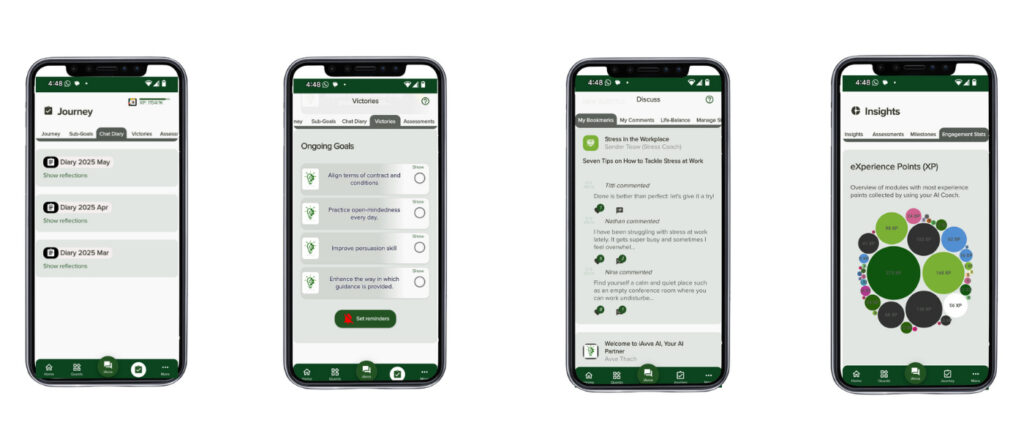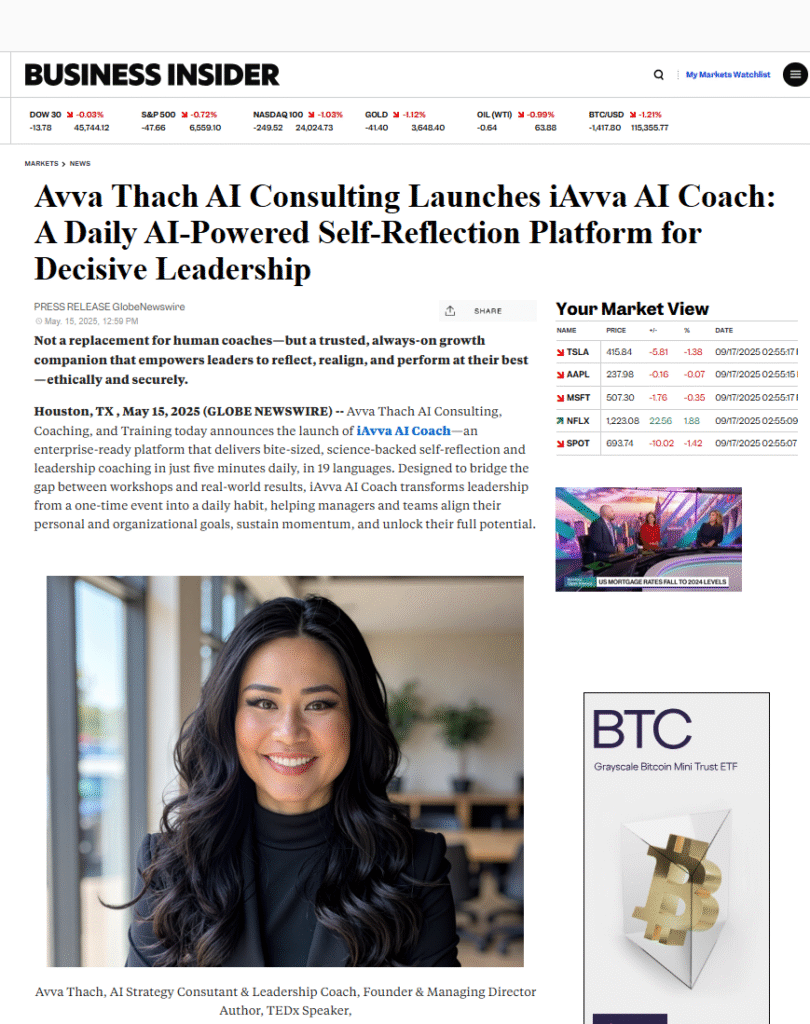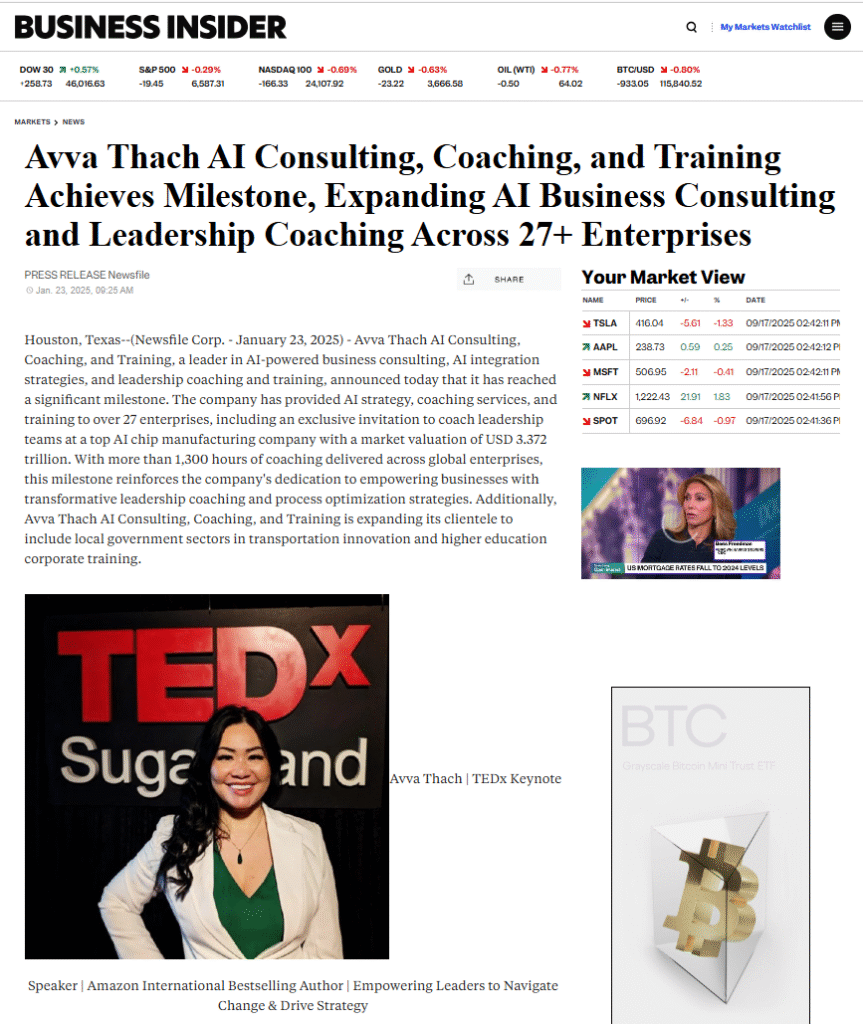Mastering Business Agility: Strategies for Thriving in a Dynamic Market
Introduction
Welcome to the thrilling world of business agility, where organizations are no longer just surviving but thriving in the fast-paced, ever-evolving market landscape. Imagine your business as a nimble gymnast, effortlessly flipping through challenges and landing on opportunities with grace. Sounds dreamy, right? But in reality, achieving this level of agility requires more than just wishful thinking.
In today’s digital age, where change is the only constant, embracing agile business practices is not just a trend it’s a necessity. Companies that adopt a business agility framework can respond to market shifts faster than their competitors, making them the Usain Bolt of the corporate world. But how do you get there?
This blog post will guide you through essential strategies to enhance your organization’s agility from fostering an agile corporate culture to implementing cutting-edge technologies that support digital transformation and agility. We’ll explore practical techniques that promote business adaptability, ensuring your teams are not just reactive but proactively shaping their futures.
Did you know? According to a study by PwC, 75% of companies believe effective training and coaching are crucial for successful digital transformation. This highlights the importance of investing in your people as much as in technology when pursuing enterprise agility.
So grab your favorite beverage and settle in as we dive into the strategies that will help you master business agility and transform your organization into a powerhouse of innovation and speed!

Understanding Business Agility
Business agility is more than just a buzzword thrown around in boardrooms; it’s the lifeblood of organizations that want to thrive in today’s fast-paced market. Think of it as the ability of a business to adapt quickly and effectively to changes, much like a chameleon changing colors to fit its environment. In essence, business agility encapsulates the flexibility and responsiveness necessary for survival and growth.
Definition of Business Agility
At its core, business agility refers to how well an organization can respond to internal and external changes. This includes everything from shifts in consumer demand to technological advancements. A truly agile organization embraces change as an opportunity rather than a hurdle. By adopting agile business practices, companies can enhance their decision-making processes, improve customer satisfaction, and foster innovation.
The Importance of Agility in Today’s Market
In an era where 70% of organizations are either currently undergoing or planning to undergo an agile transformation, the importance of agility cannot be overstated. Companies that can pivot quickly are better positioned to seize opportunities and mitigate risks. The modern market is akin to a rollercoaster ride full of ups and downs and only those with a firm grip on their agile capabilities will enjoy the ride.
Key Insight: Organizations that prioritize business agility can expect improved operational efficiency and enhanced customer experiences, leading to increased profitability.
Key Components of an Agile Business Framework
- Flexibility in Business Operations: An agile organization must be able to shift resources and strategies swiftly based on market demands.
- Cross-Functional Collaboration: Breaking down silos fosters teamwork across departments, enabling quicker responses to challenges.
- Continuous Improvement: Embracing lean and agile principles allows for ongoing refinement of processes, ensuring that businesses don’t just adapt but thrive.
- Nimble Decision-Making: Efficient decision-making processes are crucial; real-time data-driven decisions empower teams to act swiftly.
- Agile Leadership: Leaders must embody agility themselves, promoting a culture where experimentation is encouraged and failure is seen as a stepping stone toward success.
The key takeaway here? Embracing the principles of business agility not only prepares your organization for unforeseen challenges but also positions it as a leader in innovation within your industry. As you explore strategies for implementing agility in your own operations, remember that the journey toward becoming an agile organization is continuous a marathon rather than a sprint!
Agile Business Practices for Organizations
In the ever-evolving landscape of business, business agility is not just a buzzword it’s a survival tactic. Organizations are realizing that to stay relevant, they must embrace agile business practices that foster adaptability and responsiveness. Here’s how to weave agility into the very fabric of your organization:
Implementing Agile Management Techniques
Agile management isn’t just for software development anymore; it’s a game-changer across all sectors. By adopting frameworks like Scrum or Kanban, organizations can:
- Enhance collaboration: Break down silos and encourage teamwork across departments.
- Prioritize tasks effectively: Focus on what truly matters through iterative planning.
- Respond to change: Quickly adapt strategies based on real-time feedback and data.
Developing a Customer-Centric Approach to Agility
Your customers are the heartbeat of your business. Building agility around customer needs can lead to:
- Improved satisfaction: Regularly gather customer feedback to refine products and services.
- Tailored solutions: Shift resources quickly to meet changing demands.
- Loyalty boosts: Engaged customers are more likely to stick around when they feel heard.
Creating an Agile Corporate Culture
A corporate culture that embraces agility fosters innovation and resilience. Here’s how you can cultivate this environment:
- Praise experimentation: Encourage teams to test new ideas without fear of failure.
- Nurture leadership at all levels: Empower employees to take ownership of their projects.
- Cultivate continuous improvement: Implement regular retrospectives to reflect on processes and outcomes.
Did you know? According to a recent study, organizations with agile practices are 60% more likely to achieve their strategic goals compared to those without!

The journey towards becoming an agile organization is ongoing. It’s about embedding flexibility in business operations and ensuring that every team member is aligned with the vision of adaptability. As you implement these agile business practices, remember that the goal is not just speed but also meaningful engagement both within your teams and with your customers.
The takeaway? Start small, iterate often, and watch as your organization transforms into a nimble powerhouse ready to tackle whatever challenges come its way!
The Role of Leadership in Agile Transformation
When it comes to business agility, leadership is the secret sauce that transforms theoretical frameworks into practical, agile business practices. Without effective leadership, even the most well-designed agile transformation efforts can flounder like a fish out of water.
Characteristics of Agile Leadership
Agile leaders are not just figureheads; they are the catalysts for change. Here are some key characteristics:
- Visionary Thinking: They see beyond the immediate challenges and envision a future where agility reigns supreme.
- Empathy: Understanding team dynamics and individual motivations fosters a culture of trust and collaboration.
- Adaptability: Agile leaders pivot quickly in response to changing circumstances, embodying the very essence of flexibility in business operations.
Empowering Teams Through Effective Leadership Strategies
Leadership in an agile context is all about empowering teams. This means:
- Delegation: Trust your teams with decision-making power. It not only boosts morale but also enhances efficiency in decision-making processes.
- Coaching Over Directing: Instead of telling teams what to do, guide them through challenges, facilitating their growth and fostering an agile corporate culture.
- Nurturing Autonomy: Encourage self-organizing teams that can adapt quickly to changes, enhancing organizational agility.
Nurturing a Culture of Continuous Improvement and Resilience
A resilient organization thrives on continuous improvement. Here’s how leaders can cultivate this culture:
- Feedback Loops: Implement regular retrospectives where teams can reflect on what worked and what didn’t, fostering a mindset geared towards iterative process improvement for companies.
- Courage to Fail: Create an environment where failure is viewed as a stepping stone rather than a setback. This encourages innovation and agility in business strategy.
- Lifelong Learning: Promote ongoing training and development opportunities that align with agile principles, ensuring your workforce remains equipped for future challenges.
Tip for Leaders: Embrace transparency! Sharing information openly builds trust and aligns teams with organizational goals, which is crucial for achieving strategic agility for businesses.
The journey towards an agile transformation is not just about adopting new tools or processes; it’s fundamentally about how leaders inspire their teams to embrace change. By embodying these characteristics and strategies, they can drive their organizations toward enhanced resilience, adaptability, and ultimately, success in the ever-evolving market landscape.
Building an Agile Organization Structure
Creating an agile organization structure is like building a house of cards one wrong move and everything can come tumbling down! But unlike a flimsy card tower, a well-designed agile organization can withstand the winds of change and thrive in a dynamic market. Here’s how to lay the foundation for business agility that stands tall.
Designing Flexible Business Operations for Agility
The first step in building an agile organization is to focus on flexibility in business operations. This means ditching the rigid hierarchies that slow down decision-making and embracing a more fluid structure. Think of it as replacing your old flip phone with a sleek smartphone suddenly, everything is more responsive!
- Implement cross-functional teams that can pivot quickly based on project needs.
- Adopt lean and agile principles to streamline processes and eliminate waste.
- Create feedback loops for continuous improvement in business practices.
The Significance of Cross-Functional Collaboration for Agility
In an agile organization, collaboration isn’t just encouraged it’s essential! Cross-functional collaboration fosters innovation and agility in business strategy by breaking down silos that can hinder progress. When teams work together, they can share insights, leverage diverse skills, and respond to customer needs more effectively.
- Encourage regular workshops or brainstorming sessions across departments.
- Utilize collaborative tools like Slack or Trello for real-time communication.
- Create joint objectives that align with the overall business goals to foster teamwork.
Scalable Business Solutions with an Agility Focus
A truly agile organization must be able to scale its solutions quickly without sacrificing quality. This means developing scalable business solutions that can adapt as the marketplace evolves. Think of it as having a wardrobe full of versatile outfits you want pieces that work together but also stand on their own!
- Invest in technology that supports scalability, such as cloud-based platforms.
- Create modular processes that can be adjusted based on changing demands.
- Regularly assess your scalability strategies to ensure they align with market trends.
Key Takeaway: An agile organization structure is not just about speed; it’s about creating an environment where flexibility, collaboration, and scalability are at the forefront. This approach ensures resilience in business processes and positions your company for long-term success!

Nimble Business Strategies for Competitive Advantage
In the fast-paced world of business, where change is the only constant, business agility is your secret weapon. It’s like having a Swiss Army knife in your back pocket: versatile, adaptable, and always ready to tackle whatever comes your way. Let’s dive into some nimble business strategies that can give you a competitive edge!
Speed to Market Strategies for Businesses
Speed is of the essence! Companies that can launch products faster than their competitors often secure a larger market share. Here are some strategies to enhance your speed to market:
- Iterative Development: Adopt an agile business model that emphasizes short development cycles. This allows for quick adjustments based on customer feedback.
- MVP Approach: Focus on creating a Minimum Viable Product (MVP) to test your ideas quickly without overcommitting resources.
- Cultural Shift: Foster an agile corporate culture that encourages teams to experiment and learn from failures quickly.
Responsive Supply Chain Management Practices
Your supply chain should be as nimble as a cat on a hot tin roof! Here’s how you can make it more responsive:
- Diverse Sourcing: Avoid putting all your eggs in one basket. Use multiple suppliers to mitigate risks and ensure quick responses to changes in demand.
- Technology Integration: Implement digital transformation tools that provide real-time visibility across the supply chain, allowing for quicker decision-making.
- Collaboration: Encourage cross-functional cooperation between departments, including sales, marketing, and logistics, to streamline processes and enhance responsiveness.
Real-Time Data-Driven Decisions
The ability to make swift decisions based on real-time data is paramount for maintaining agility in business strategy. Here’s how you can achieve this:
- Data Analytics Tools: Invest in advanced analytics platforms that enable the quick and accurate interpretation of data, facilitating informed decision-making.
- KPI Monitoring: Establish clear KPIs that align with your agile goals. Regularly monitor these metrics to identify areas needing improvement or adjustment.
- A/B Testing: Utilize A/B testing methods to evaluate different strategies or products in real time before full-scale implementation.
Takeaway: Implementing these nimble business strategies not only enhances your competitive advantage but also fortifies your organization’s resilience against market fluctuations.
Implementing the Business Agility Framework
So, you’ve decided to embrace the business agility framework. Congratulations! You’re about to transform your organization into a nimble powerhouse capable of adapting to change faster than a cat on a hot tin roof. But how do you actually implement this framework? Let’s break it down!
An Overview of the Business Agility Framework Components
The business agility framework is like a well-oiled machine, consisting of several interlocking components that work together to enhance organizational agility. Here’s what you need to focus on:
- Agile Business Model: Shift from traditional models to agile ones that prioritize customer value and rapid iteration.
- Agile Leadership: Leaders must embody agility, fostering an environment where teams feel empowered and supported.
- Agile Processes: Implement lean and agile principles that promote efficiency and flexibility in operations.
- Cross-Functional Collaboration: Encourage teams from different departments to work together seamlessly for quicker decision-making.
Aligning Goals with Agile Processes in Businesses
This is where the magic happens! Aligning your organizational goals with agile processes ensures everyone is rowing in the same direction. Here’s how you can do it:
- Create Clear Objectives: Define what success looks like for your teams. Ensure that these objectives are both measurable and achievable.
- Iterate Regularly: Use iterative process improvement techniques to refine goals based on real-time feedback and data.
- Communicate Transparently: Keep everyone informed about changes in goals or processes, ensuring that no one feels left out.
Iterative Process Improvement for Companies Adopting Agility Principles
The journey towards business agility is not a sprint; it’s more like a marathon with lots of checkpoints. Here’s how to keep improving along the way:
- Feedback Loops: Establish mechanisms for continuous feedback from both customers and employees. This will help you pivot when necessary.
- A/B Testing: Experiment with different approaches or solutions in small batches before rolling them out company-wide.
- Cultivate an Agile Mindset: Encourage all employees to think innovatively about their work processes and suggest improvements on a regular basis.

The bottom line? Mastering the business agility framework requires commitment across all levels of your organization. By aligning your goals, embracing iterative improvements, and fostering an agile culture, you’re setting yourself up for success in today’s fast-paced market. Now go forth and lead your team into this exciting new era!
The Future of Business Agility and Innovation
As we look toward the horizon of 2025 and beyond, the landscape of business agility is rapidly evolving, driven by the relentless pace of technological advancement and shifting market demands. The integration of digital transformation into business strategies is not merely a trend; it’s becoming a fundamental necessity for organizations aiming to enhance their organizational agility.
The role of digital transformation in enhancing business agility cannot be overstated. Companies that leverage advanced technologies think AI, machine learning, and real-time data analytics are not just surviving; they are thriving. These tools enable businesses to make real-time data-driven decisions, allowing for a level of responsiveness that was previously unimaginable.
Key Insight: A recent study found that organizations that effectively implement digital transformation strategies experience a 30% increase in their speed to market, significantly outperforming their competitors.
Navigating Challenges and Leveraging Opportunities
However, with great power comes great responsibility or should we say challenges? Many organizations face significant hurdles in their quest for agility. Common pitfalls include entrenched silos, cultural resistance to change, and skill gaps among employees. To navigate these challenges, companies must adopt a mindset of continuous improvement in business. This involves not just embracing change but actively seeking it out as a means to foster innovation.
The Continuous Evolution of Agile Practices
The evolution of agile practices within organizations is akin to upgrading from a flip phone to the latest smartphone. What worked yesterday may not suffice tomorrow. As businesses adopt more flexible frameworks like the business agility framework, they become better equipped to pivot quickly in response to market changes.
- Adopt Lean and Agile Principles: Streamlining processes can lead to faster innovation cycles.
- Foster Cross-Functional Collaboration: Breaking down departmental barriers enhances communication and accelerates project timelines.
- Cultivate an Agile Corporate Culture: Encourage experimentation and learning from failures without fear.
The future also demands that companies align their goals with agile processes more effectively than ever before. By doing so, they can ensure that all teams are working towards common objectives while remaining adaptable enough to shift direction when necessary.
A Look Ahead: Strategic Agility for Businesses
The concept of strategic agility will play an increasingly pivotal role in how businesses operate. Companies must develop what we call “dynamic capabilities,” the ability to integrate, build, and reconfigure internal and external competencies to address rapidly changing environments. This adaptability can be the difference between leading the market and trailing behind.
In conclusion, as we move forward into this new era characterized by rapid change and technological advancement, embracing a culture of agility will be crucial for any organization seeking longevity and success. The future belongs not only to those who adapt, but also to those who continuously innovate while remaining customer-centric in their approach.
“The most successful companies will be those that embrace change as an opportunity rather than an obstacle.”
Takeaway: Start today by evaluating your current agile practices. What’s working? What needs tweaking? Remember, agility isn’t just about speed; it’s about being smartly responsive!
Conclusion </ h 2 >
- Recap on the significance of mastering business agility </ li >
- Final thoughts on embracing change and fostering innovation </ li >
< / ul >
< / section >






















Leave a Reply